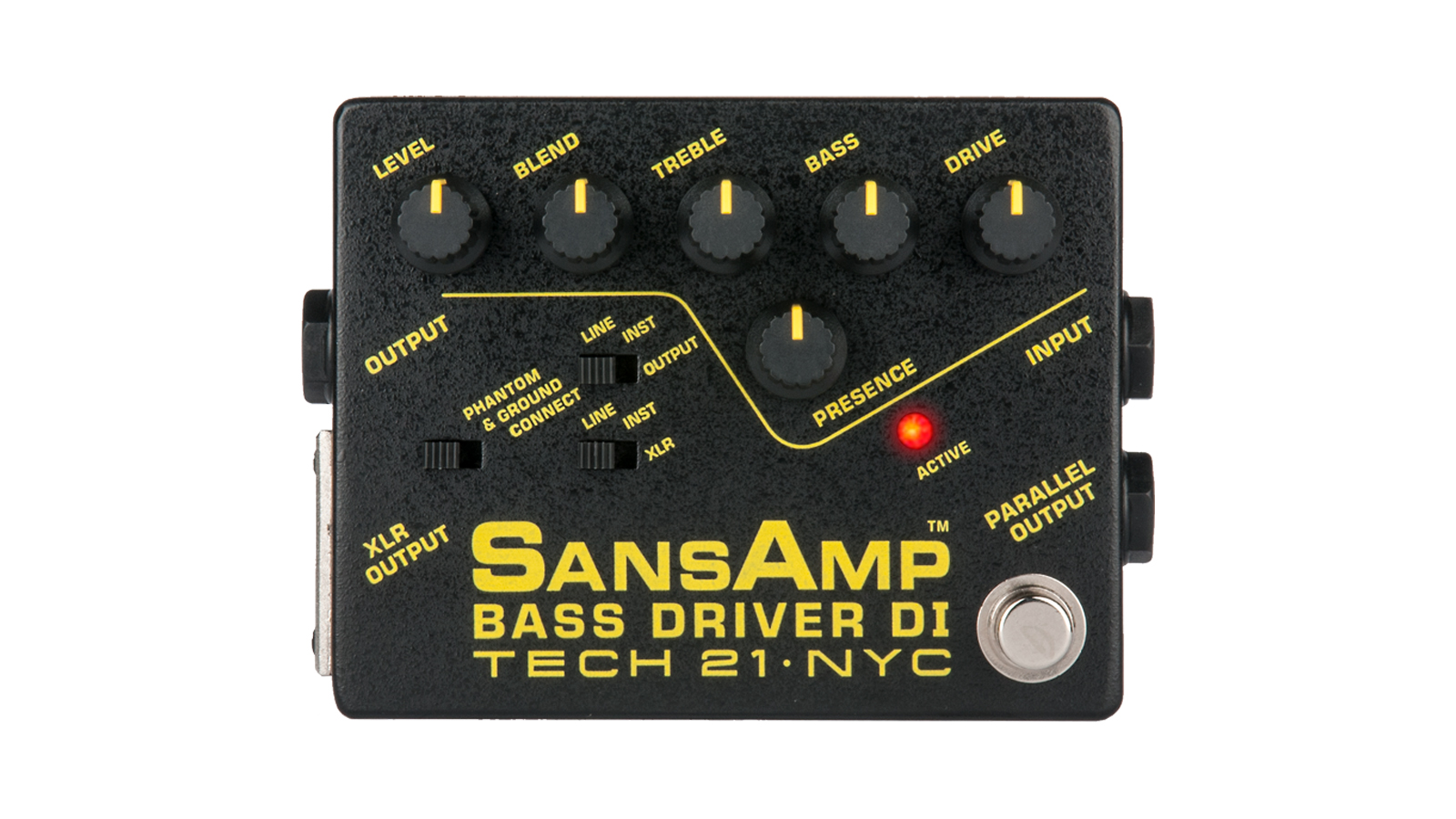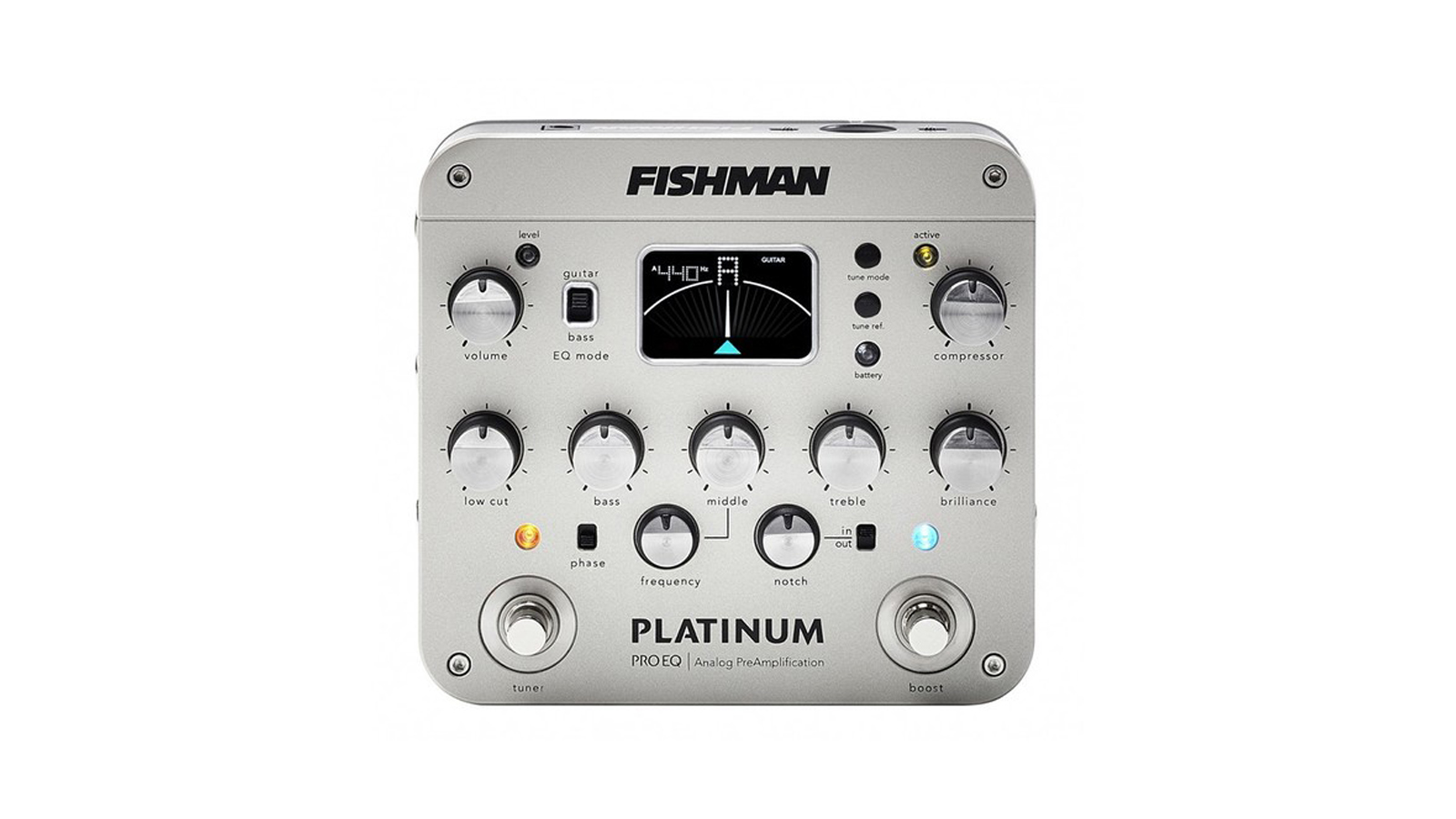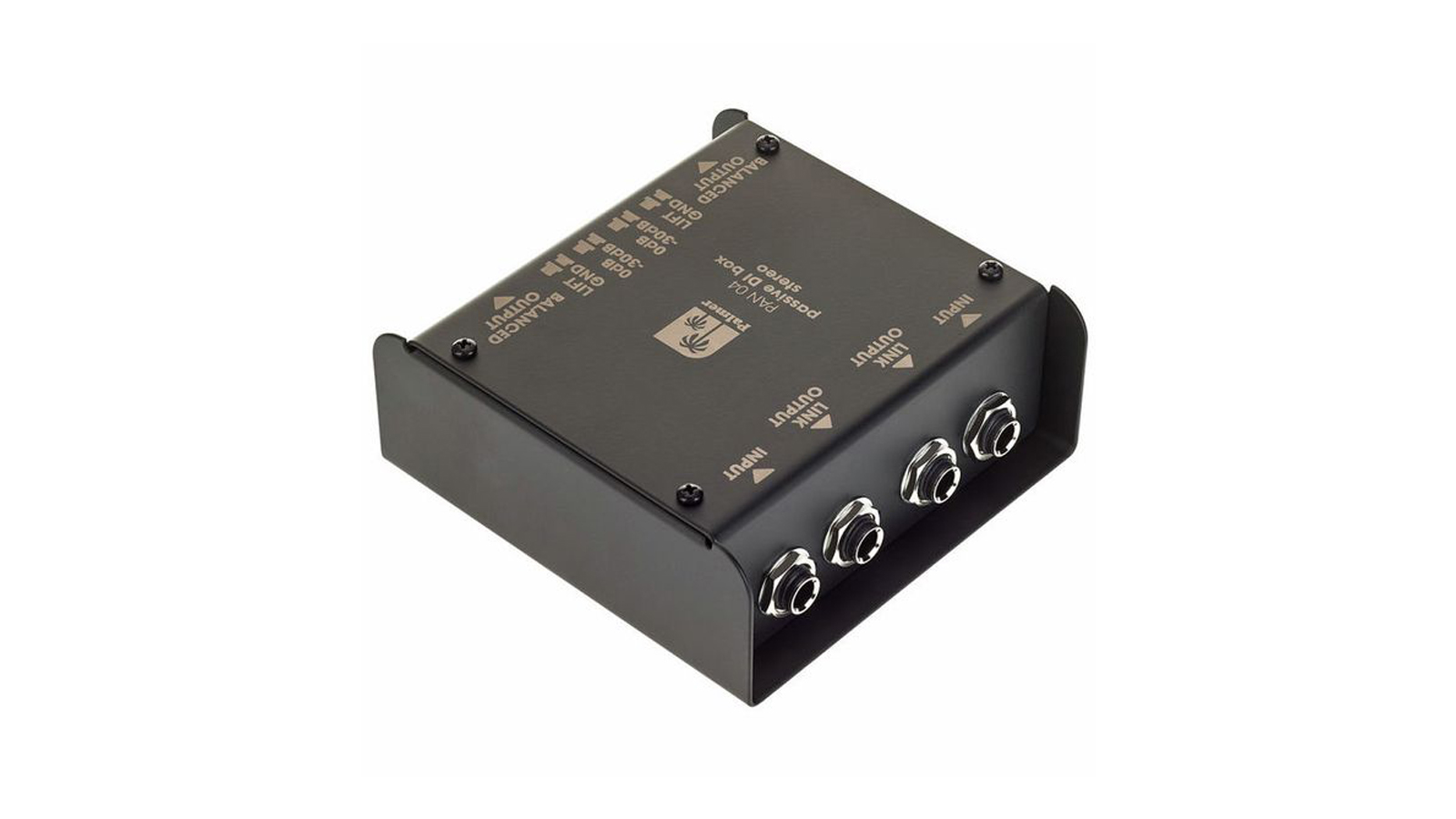Best DI boxes 2026: A studio and stage staple for acoustic guitar, bass and keyboards
The DI box is an essential piece of gear and we have high-quality options from Rupert Neve, Tech 21, Fishman, Radial and more

The humble DI box is arguably one of the most overlooked pieces of musical equipment on the stage or in the studio - many players don't even know they need one. Designed to resolve the pesky problem of mismatched impedance, the direct input box is used to transform your unbalanced, high-impedance signal into a balanced, low-impedance signal - simple. For us, the best DI boxes are straightforward to use, come with problem-solving features, and are built to withstand the harsh conditions of gigging.
A DI box is a must-have device for anyone planning on plugging in an acoustic guitar, bass, or keyboard directly into the PA. This unassuming little box will ensure your instrument sounds as good as it should, eliminating hum, buzz, and other noise as well as guaranteeing a healthy signal - you know, so everyone at the back of the room can hear your hot new take on Mustang Sally, exactly the way you intended.
In this comprehensive guide, we've made sure to include both passive and active DI boxes, together with feature-laden options explicitly designed for bass players and must-have units for acoustic guitarists.
So, no matter if you're looking for a multifaceted box with more features and controls than the Millennium Falcon or a cheap and cheerful DI to get you through a gig, you'll find what you are looking for here.
Best DI boxes: Our top picks

Radial knows a thing or two about pro audio kit. Form splitters to reamp boxes, studio effects to isolators, Radial have the stage and studio covered. It's only natural then, that we'd feature their incredibly popular J48 MKII in this guide of the best DI boxes.

This robust black box has been seen on pedalboards around the world, and for good reason - in our eyes, it's the only DI box a bass player needs. First, it has to be said that the SansAmp is more than a sturdy and reliable DI box, it's also a powerful tone shaping device.

If you play acoustic guitar in a live setting, you'll know the importance of a high-quality DI box, and for us, the LR Baggs Para Acoustic DI may be the best out there. Now, it's fair to say that a straight DI acoustic isn't the most inspiring sound in the world.
Best overall

1. Radial J48 MK2 Active Direct Box
Our expert review:
Specifications
Reasons to buy
Reasons to avoid
Radial knows a thing or two about pro audio kit. Form splitters to reamp boxes, studio effects to isolators, Radial have the stage and studio covered. It's only natural then, that we'd feature their incredibly popular J48 MKII in this guide of the best DI boxes.
This Canadian-made DI has a plethora of features, all designed to ensure you have the cleanest signal possible. According to the folks over at Radial, the J48 makes use of a switching power supply that expands the internal rail voltage, which means this DI can handle 9 volts, resulting in "improved signal handling and greater headroom".
As you'd expect, the J48 runs off 48V phantom power, meaning there's no need for batteries. And for those with stereo instruments or sound sources, the Radial offers a merge function, which transforms the Thru output into a second input, and in turn, converts the signal to mono before sending it to the XLR output.
Best for bass players

2. Tech 21 SansAmp Bass Driver DI
Our expert review:
Specifications
Reasons to buy
Reasons to avoid
This robust black box has been seen on pedalboards around the world, and for good reason - in our eyes, it's the only DI box a bass player needs. First, it has to be said that the SansAmp is more than a sturdy and reliable DI box, it's also a powerful tone shaping device.
The SansAmp offers a massive range of tones, from standard DI bass tones, to warm and tube-like grit and even full-on distortion. And better yet, the Tube Amplifier Emulation circuitry hidden inside means the SansAmp can be used as your primary source of tone. The handy Blend control allows you to mix in as much of this emulation as you need.
Tech 21 has also packed plenty of output options into the Bass Driver, with an XLR and 1/4″ jack, as well as a parallel, unaffected 1/4″ output perfect for sending the bass signal to your on stage amplifier. Next, the onboard footswitch activates the Tube Amplifier Emulation circuitry.
Best for acoustic guitars

3. LR Baggs Para Acoustic DI/Preamp
Our expert review:
Specifications
Reasons to buy
Reasons to avoid
If you play acoustic guitar in a live setting, you'll know the importance of a high-quality DI box, and for us, the LR Baggs Para Acoustic DI may be the best out there. Now, it's fair to say that a straight DI acoustic isn't the most inspiring sound in the world. They can lack depth, sounding thin, and often way too bright. Well, luckily, LR Baggs has a solution that will ensure you have the best possible acoustic guitar experience.
With a powerful five-band EQ, this DI box allows you to effortlessly dial in any vital frequencies you may be missing. The included phase inversion button is a valuable addition, giving you extra control and can even help with feedback issues.
So if you are a gigging musician that relies on the sound of an acoustic guitar, this is a must-have DI box and is well worth investing in.
Best for studios

4. Rupert Neve Designs RNDI
Our expert review:
Specifications
Reasons to buy
Reasons to avoid
Rupert Neve is one of the biggest names in the world of pro audio. His iconic mixing consoles have been used on countless records, with many people trying to replicate the sound produced by these classic desks. So it makes sense then that he'd make one of the best DI boxes as well.
The RNDI may not be as fully loaded with features as others on the list, but for what it does do, it does it incredibly well. The custom Rupert Neve-designed transformers and class-A biased, discrete FET amplifiers used inside were developed to produce an extremely high headroom, harmonically rich sound, perfect for capturing basses, guitars, pianos, and so much more.
The convenient speaker mode can handle up to 1000 watts of solid-state power and is perfect for those players who want to DI the sound of their bass amp. So, if you are looking for a simple to use, excellent sounding DI from a name you can trust, the Rupert Neve Designs RNDI is the one for you.
Best on a budget

5. Behringer Ultra-DI DI400P
Our expert review:
Specifications
Reasons to buy
Reasons to avoid
Behringer is well known for bringing affordable music gear to the masses. Whether it's inexpensive guitar pedals, cheap mixing desks or reasonably priced synths, Behringer will have a product for you.
For many of us, we don't need an all-singing-all-dancing DI box, we simply need a basic DI that does the job, and the Behringer Ultra-DI DI400P certainly does that. This petite passive DI is perfect for guitar, bass or keyboard and includes a handy ground lift switch to get rid of unwanted noise.
Now, it may be small, but the Behringer still manages to pack in parallel 1/4" input and output jacks, allowing you to send the exact same signal to your on stage amplifier, while the XLR output sends a balanced signal to your mixer.
Best for features

6. Fishman Platinum Pro DI Preamp
Our expert review:
Specifications
Reasons to buy
Reasons to avoid
Looking to streamline your current setup? Well, the Fishman Platinum Pro DI Preamp is precisely what you are looking for. Not only is the Platinum Pro a very robust and practical DI box, but it's also a powerful preamp with comprehensive EQ controls, an integrated chromatic tuner, and even a compressor! It really is the only device you need to ensure you have a killer DI tone.
At the heart of this all-analog DI box is a five-band EQ control, which includes a sweepable mid-range and low-cut filter for precise tonal adjustments. The instrument switch allows you to pick between guitar and bass modes, while the one-knob compressor allows you to simply apply compression with the turn of a dial.
There are very few products on the market that offer this level of control over your tone, let alone a DI box. For us, the Fishman Platinum Pro DI Preamp offers fantastic value for money and could be all you need to achieve the DI tone of your dreams.
Best two-channel DI box

7. Palmer PAN 04
Our expert review:
Specifications
Reasons to buy
Reasons to avoid
This stereo DI box is ideal for instruments such as keyboards, synths and drum machines with multiple outputs and obviously comes loaded with noise eradicating features such as ground lift switches, just like others on this list.
For its relatively low price tag, the Palmer is incredibly well made, with its sheet steel construction effortlessly holding up to the brutal conditions of the stage - or indeed the studio.
If you are looking for an affordable stereo option, then you really can't go wrong with the Palmer.
Best mini DI

8. Mooer Micro DI
Our expert review:
Specifications
Reasons to buy
Reasons to avoid
Chances are, if you're a guitarist, you'll have heard of Mooer. The Shenzhen-based company is recognized for its pint-sized guitar pedals and other guitar accessories - it's pretty incredible just what Mooer can pack in such a small format.
With all the pedal areas covered, such as delay, chorus, reverb, overdrive, and pretty much another effect you can think of, the next logical step is a teeny-tiny DI - with cabinet emulation, obviously.
It's hard to believe just what you are getting for the price with the Mooer Micro DI. All the features you've come to expect - and more - are still present, despite its small size. A balanced and unbalanced output, gain switch, cabinet simulator and ground lift function are all included in a device that is smaller than your favourite overdrive pedal!
FAQs

What is a DI box?
DI boxes are often misunderstood, with many musicians not knowing if they even need one. So, what is a DI box? Well, DI stands for direct input or direct injection, and they are used to resolve the issue of mismatched impedance. You'll see DI boxes in both studio and live situations, and they are used to convert a high-output impedance, line-level signal into a low-impedance, microphone-level signal.
Now, in real-world terms, DI boxes are used to connect instruments such as bass or acoustic guitars into a mixing console. You may want to do this for several reasons. Maybe you want to play your bass or electro-acoustic through a portable PA system, without micing it up, or perhaps you want to capture a clean guitar tone along with your distorted one while recording. Either way, you need a DI box to do it.
What other features do DI boxes have?
As well as allowing you to plug your line-level instruments into your mic channel on your mixer, modern DI boxes also come loaded with extra features, all with the view of ensuring you have the best sounding signal possible.
One feature you'll see on most DI boxes is a ground-lift switch. This handy little button is there to eliminate noise caused by ground loops. For us, this is a must-have feature as it can get you out of a sticky situation when all your gear starts to buzz and hum. It's also common to see pads on a DI as well. A pad is used to tame loud signals and bring them down to a more manageable level.
Another feature that is an absolute must is a thru output. The purpose of a thru is to allow you to send a copy of the signal - before conversion - somewhere else. This is commonly used by guitarists or bassists to split the signal between the DI and their amplifier. It can also be used in a recording setting to ensure you always have an unaffected clean signal, that you can reamp later.
Lastly, it's becoming more and more common to see cabinet emulation built directly into the DI box. As the name suggests, this makes your DI signal sound like it's coming from an amp and speaker cab. Obviously, this adds an extra level of depth to your tone and even means you can ditch the amp completely.
How we choose
Here at MusicRadar, we are experts in our field, with many years of playing, creating and product testing between us. We live and breathe everything music gear-related, and we draw on this knowledge and experience of using products in live, recording and rehearsal scenarios when selecting the products for our guides.
When choosing what we believe to be the best DI boxes available right now, we combine our hands-on experience, user reviews and testimonies and engage in lengthy discussions with our editorial colleagues to reach a consensus about the top products in any given category.
First and foremost, we are musicians, and we want other players to find the right product for them. So, we carefully consider everything from budget to feature set, ease of use, and durability to come up with a list of what we can safely say are the best DI boxes on the market right now.
Find out more about how we test music gear and services at MusicRadar.
Why trust us
With more than 17 years of experience, MusicRadar is the premier music-making website in the world. Run by musicians for musicians, we offer expertly written gear round-ups and high-quality, authoritative reviews by an extensive team of highly experienced industry professionals.
Below you'll find more information on the expert author of this guide.

I'm a Senior Deals Writer at MusicRadar, and I'm responsible for writing and maintaining buyer's guides on the site - but that's not all I do. As part of my role, I also scour the internet for the best deals I can find on gear and get hands-on with the products for reviews. My gear reviews have been published in prominent publications, including Total Guitar and Future Music magazine, as well as Guitar World.com.
I have a passion for live sound, having worked professionally as a sound engineer in a number of venues around Scotland. I hold a first-class Bachelor's degree in Creative Sound Production from the University of Abertay and I have worked for various bands, as well as my fair share of pantomimes, dance shows and even opera. I have also operated the sound for some of the country's top comedians, including Alan Carr, Ed Byrne and James Acaster, among others.
Related buyer's guides
MusicRadar's got your back
- The best microphones for recording: beginner to pro musicians
- Best vocal mics: vocal microphones for the studio and stage
- Protect your hearing with the best earplugs for musicians
- The best in-ear monitors: IEMs to suit all budgets
- The 10 best consoles for live mixing: gig-ready boards
Want all the hottest music and gear news, reviews, deals, features and more, direct to your inbox? Sign up here.

I'm a Senior Deals Writer at MusicRadar, and I'm responsible for writing and maintaining buyer's guides on the site. As part of my role, I also scour the internet for the best deals I can find on gear and get hands-on with the products for reviews. My gear reviews have been published in prominent publications, including Total Guitar, Guitarist, and Future Music, as well as Guitar World.com. I've also had the privilege of interviewing everyone from Slash to Yungblud, as well as members of Sum 41, Foo Fighters, The Offspring, and many more.
In a previous life, I worked in music retail, selling everything from digital pianos to electric guitars. I'm also a fully qualified sound engineer who holds a first-class Bachelor's degree in Creative Sound Production from the University of Abertay.